An experimental home near New Delhi offers a new template for Indian housing
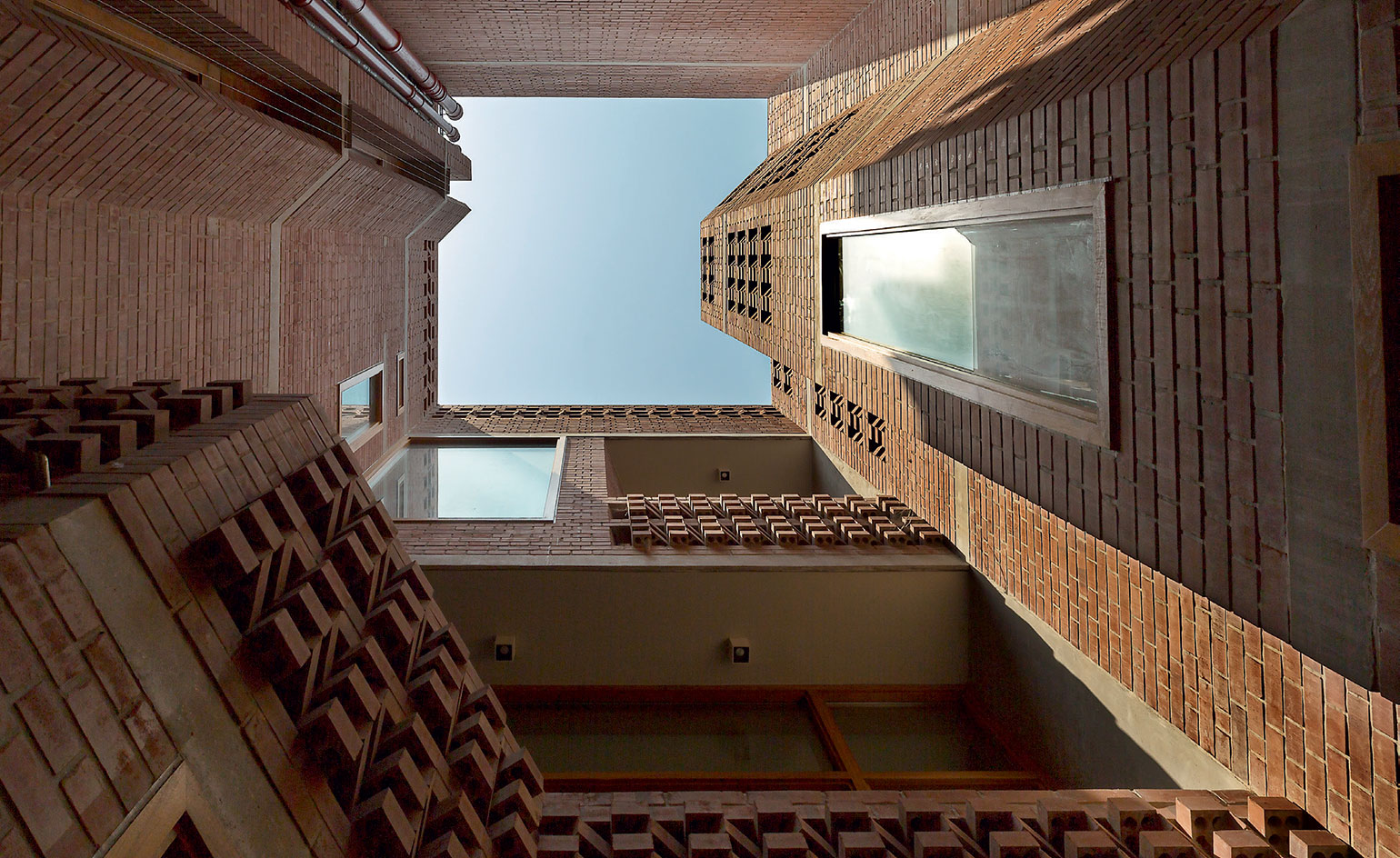
New Delhi studio Vir.Mueller Architects builds no more than one house per year. Each is a test bed for a new system, a small-scale infrastructure idea, and a chance to develop a material process further – all part of a wider research agenda on the evolution of the Indian architectural landscape. A multigenerational home, for two brothers, their families and their parents, is the studio’s latest experiment.
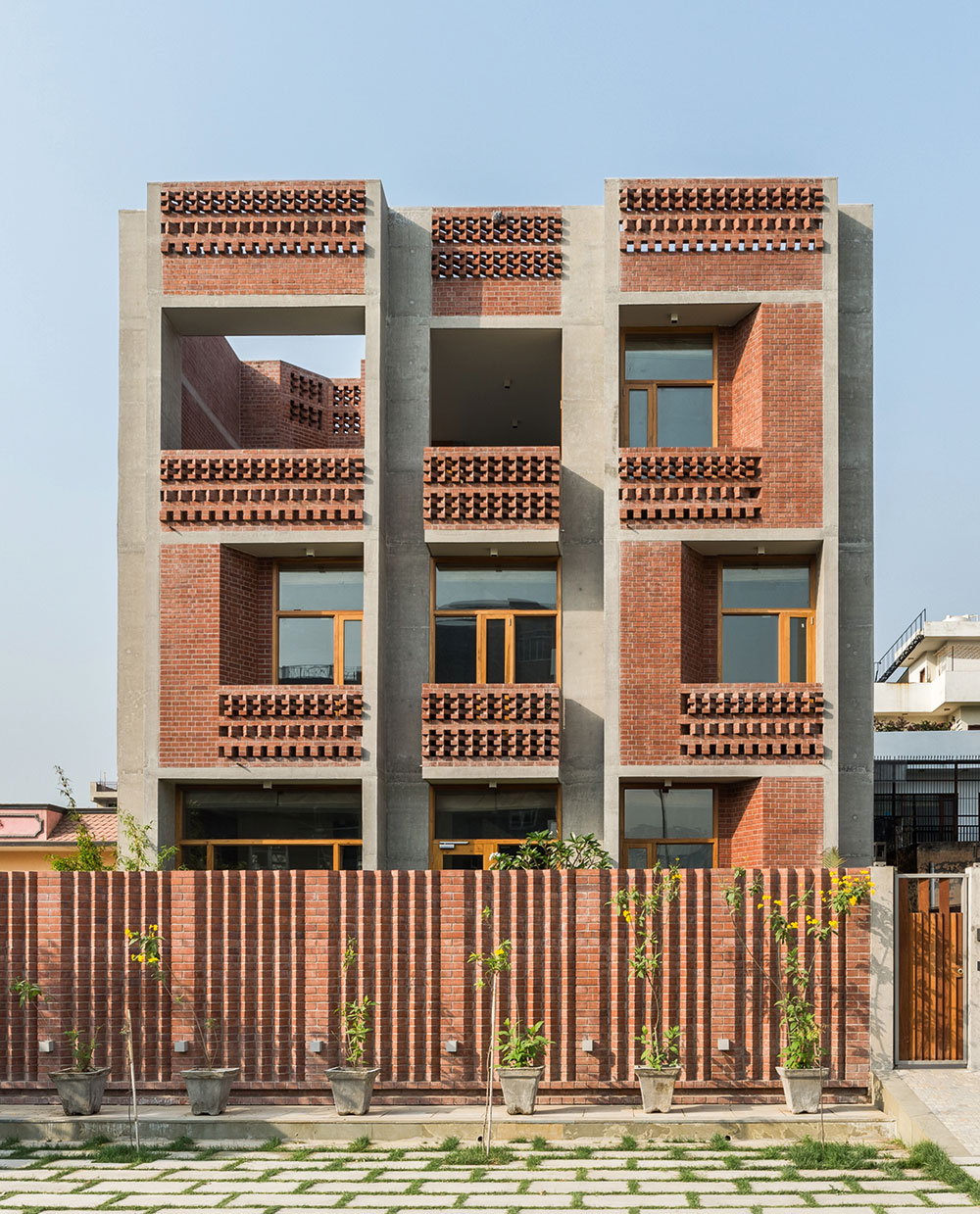
The striking façade in brick and concrete.
A large site among empty plots in Noida – a fast-growing area just outside New Delhi on the east bank of the Yamuna River – offered the architects a chance to design a house that ‘created its own context’. One of the brothers, Abhinav Singh, a young technology entrepreneur, was quite happy to be a pioneer of this new neighbourhood, and of a new architectural prototype. Together with Singh, the architects decided this design should be an experiment reflecting a social mandate and be adaptable to any family of India’s billion-plus population. More than a brief, it was a ‘remarkable design mission’ for the architects.
‘The real character of the house can be seen in the exposed brick pattern and texture. The surface is tactile, almost like an armadillo shell’
Looking at the project as a template for an Indian home, the plan of the house became a microcosm of a city, where a central street brings the three generations together without hierarchy. Staircases form bridges into the family zones, while the central courtyard and roof terrace are places for collective encounters.
‘This had to be a house where you could host a dinner party or a kid could practise a tennis swing with a ball, where you could stage a fashion show or do your daily laundry,’ says architect Pankaj Vir Gupta, who co-founded Vir.Mueller Architects with partner Christine Mueller in the US in 2003, relocating to India in 2006. Reflecting the design’s spatial flexibility, materials had to be robust and durable, yet also easily sourced locally in keeping with the intention to create an attainable model for Indian residential architecture.
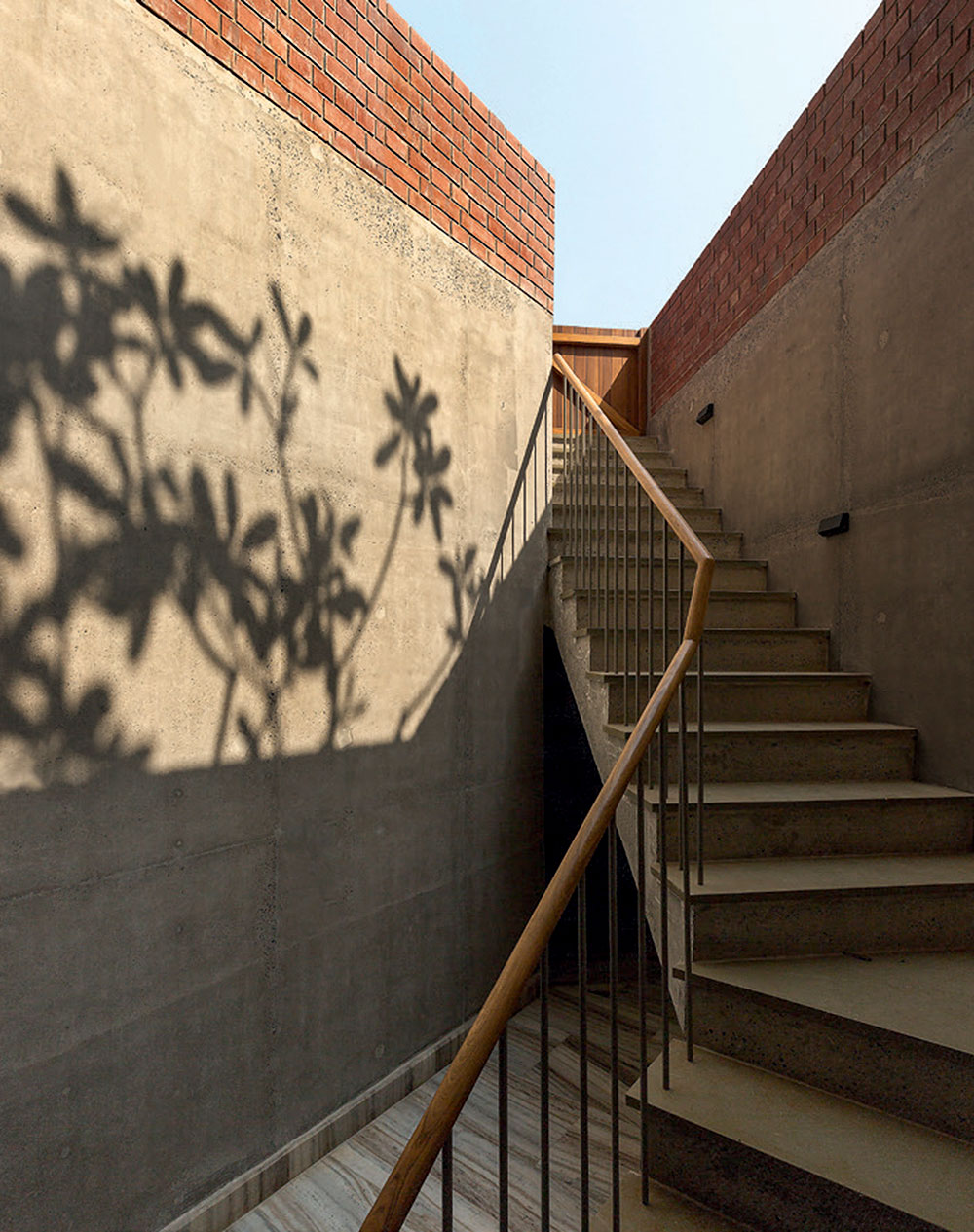
The stairs leading down to the basement.
‘Singh wanted the house to reflect the material resources of India,’ says Vir Gupta. ‘He also wanted the house to enable him to understand the physics behind light, volume and scale, and where the four young children could learn to appreciate the powerful aesthetic presence of natural materials.’
Using their decade-long experience of working with local materials in India, Vir Gupta and Mueller selected three primary elements for the house: machine-moulded red brick, concrete and teak timber sourced from the forests of Madhya Pradesh.
‘The real character of the house can be seen in the exposed brick pattern and texture. The surface is tactile, almost like an armadillo shell,’ says Vir Gupta, who explains that, while the brick walls may appear to be ornamental, they in fact form the load-bearing structural element of the house and provide a tough skin protecting its inhabitants from the heat and dust. Their pattern also creates hundreds of micro-shadows across the façade, cooling the house and directing heat away. Never in need of paint, it is a system that is both self-sufficient and architecturally bold.
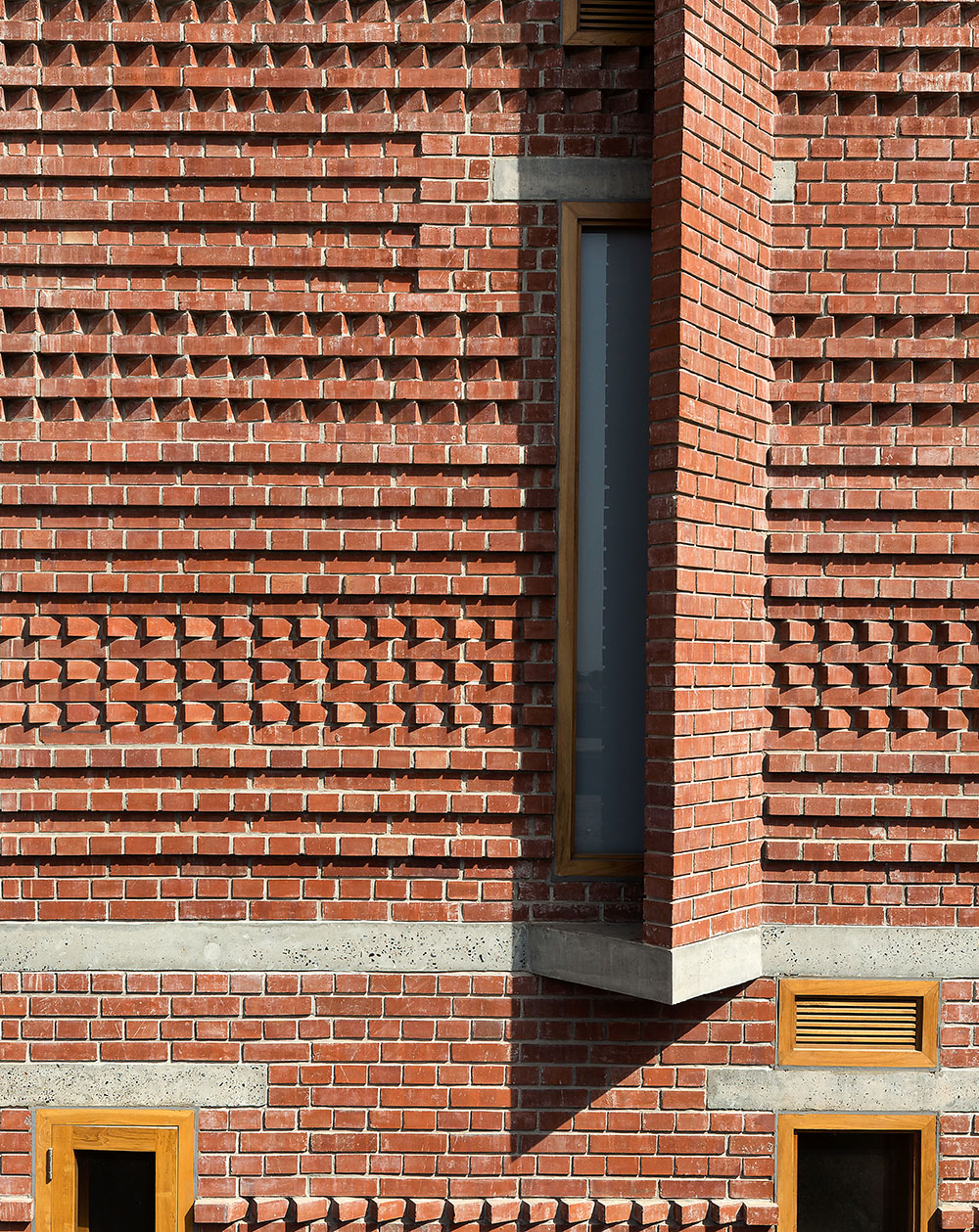
Angled vertical brick walls block direct sunlight and keep the house cool.
An engineer by training, Singh is fascinated by architecture and spent hours looking at the plans of previous designs by Vir.Mueller Architects to understand the principles of design. He wanted the house to be a handcrafted, self-directed project that reflected egalitarian principles throughout its construction, too.
‘The house was an attempt to propose a simple design methodology, capable of delivering a high-quality architectural proposition’
This meant avoiding commercial building contractors, with their pre-existing expertise, says Vir Gupta. ‘We hired a team of 20 daily wage labourers. They worked by developing prototypes of each element of the house without fully grasping the wider context of what they were making.
This created a new challenge for the architects, as plans and instructions had to be crystal clear in order to be understood by an unskilled and mostly illiterate workforce. This experience led to further questions about how to design an ‘egalitarian’ architecture for India.
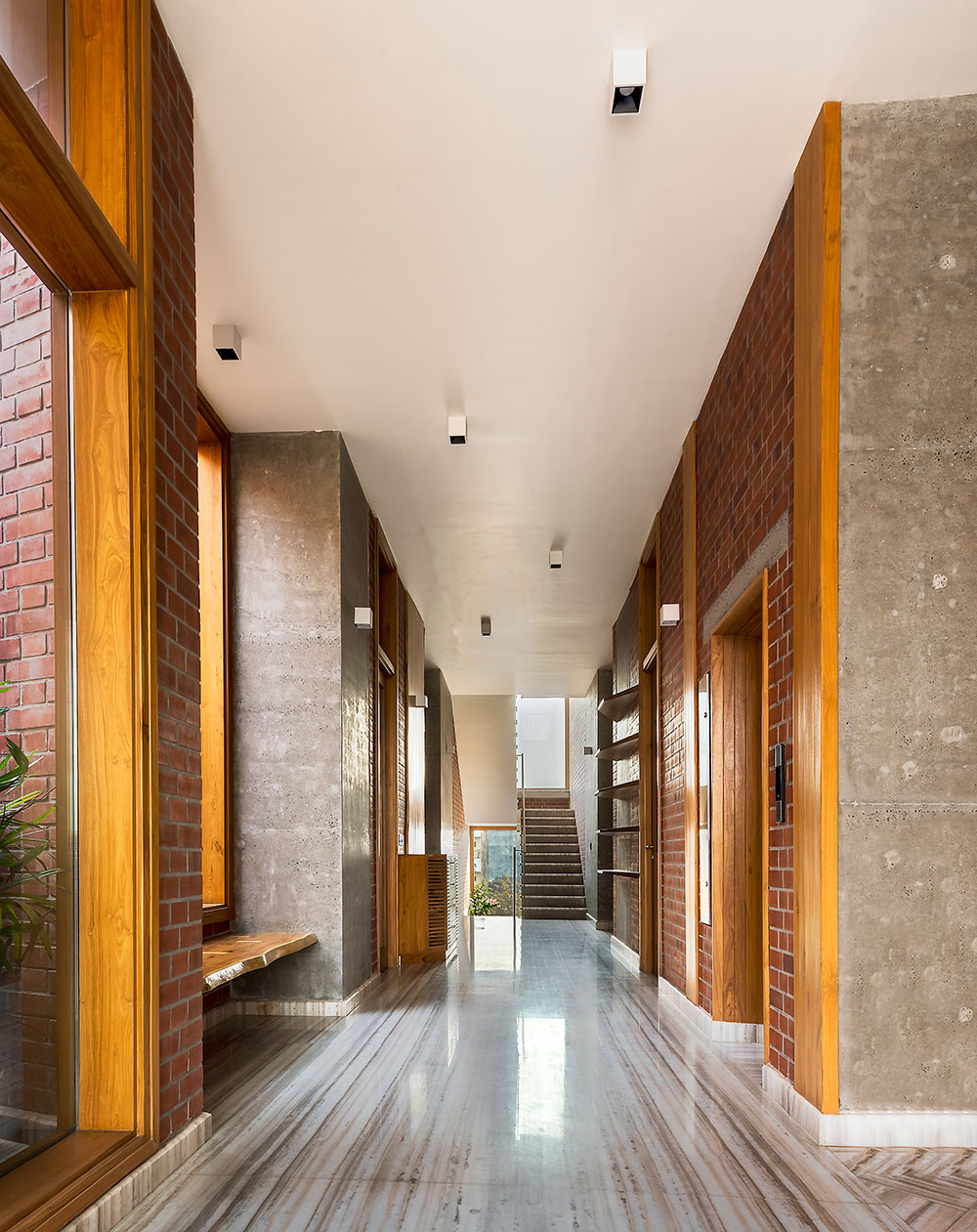
The central axis of the house, with floors in local white dungri marble.
‘In a country that is urbanising very quickly, but where a lot of construction work is of poor quality, the house was an attempt to propose a simple design methodology, capable of delivering a high-quality architectural proposition,’ says Vir Gupta.
The Singh house is certainly a functional model for building and living. Practical and hardy, it is also influenced by local context and natural processes, developing shapely patterns and systems to solve environmental obstacles. One can hope it will become the model for many more new builds.
As originally featured in the October 2018 issue of Wallpaper* (W*235)
Receive our daily digest of inspiration, escapism and design stories from around the world direct to your inbox.
INFORMATION
For more information, visit the Vir.Mueller Architects website
Harriet Thorpe is a writer, journalist and editor covering architecture, design and culture, with particular interest in sustainability, 20th-century architecture and community. After studying History of Art at the School of Oriental and African Studies (SOAS) and Journalism at City University in London, she developed her interest in architecture working at Wallpaper* magazine and today contributes to Wallpaper*, The World of Interiors and Icon magazine, amongst other titles. She is author of The Sustainable City (2022, Hoxton Mini Press), a book about sustainable architecture in London, and the Modern Cambridge Map (2023, Blue Crow Media), a map of 20th-century architecture in Cambridge, the city where she grew up.
-
 Robert Therrien's largest-ever museum show in Los Angeles is enduringly appealing
Robert Therrien's largest-ever museum show in Los Angeles is enduringly appealing'This is a Story' at The Broad unites 120 of Robert Therrien's sculptures, paintings and works on paper
-
 The Wallpaper* style team recall their personal style moments of 2025
The Wallpaper* style team recall their personal style moments of 2025In a landmark year for fashion, the Wallpaper* style editors found joy in the new – from Matthieu Blazy’s Chanel debut to a clean slate at Jil Sander
-
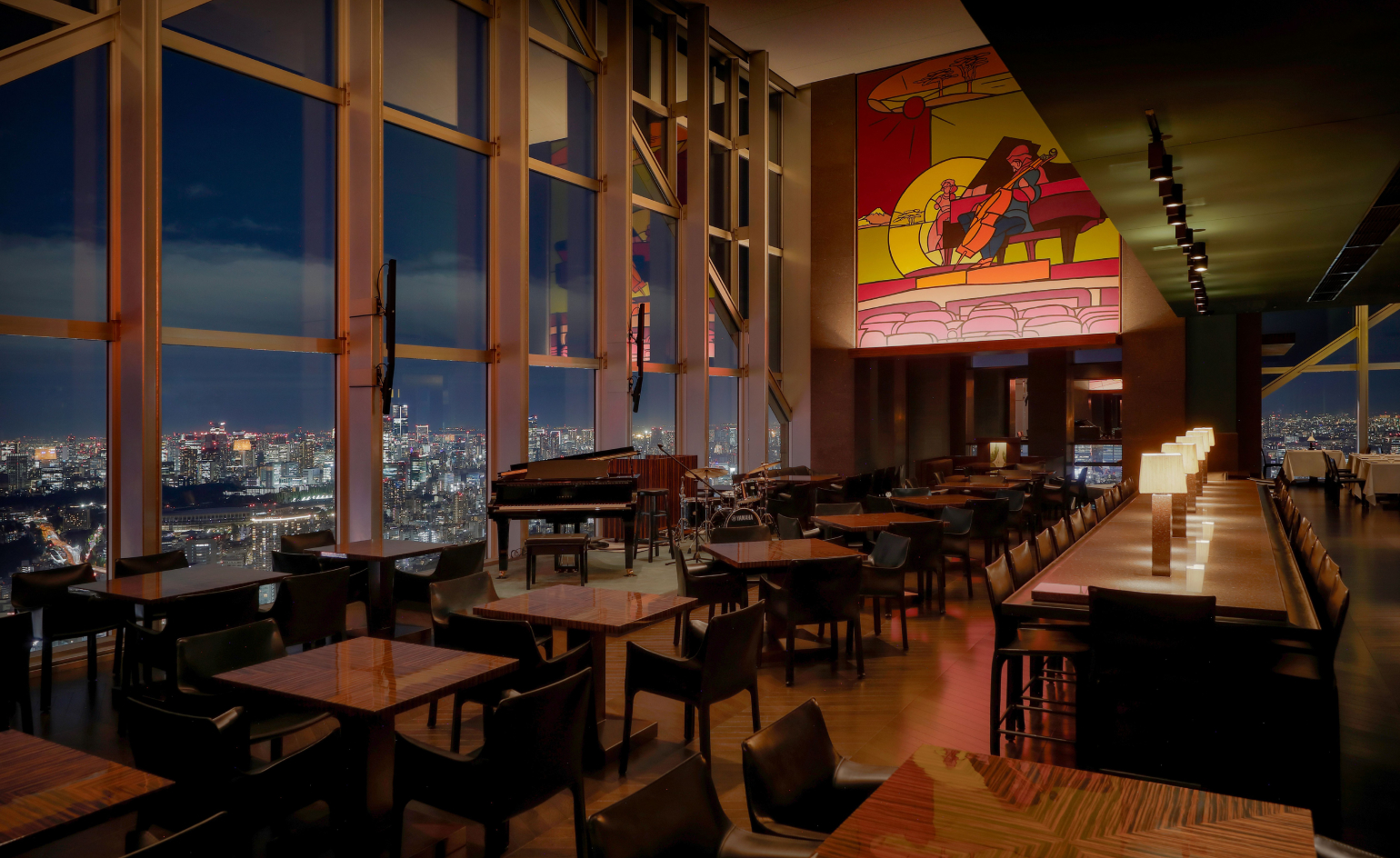 Tokyo’s most cinematic stay reopens as an exercise in architectural self-control
Tokyo’s most cinematic stay reopens as an exercise in architectural self-controlPark Hyatt Tokyo and Studio Jouin Manku demonstrate how design can evolve without erasing memory, balancing modernist heritage with contemporary comfort
-
 A day in Ahmedabad – tour the Indian city’s captivating architecture
A day in Ahmedabad – tour the Indian city’s captivating architectureIndia’s Ahmedabad has a thriving architecture scene and a rich legacy; architect, writer and photographer Nipun Prabhakar shares his tips for the perfect tour
-
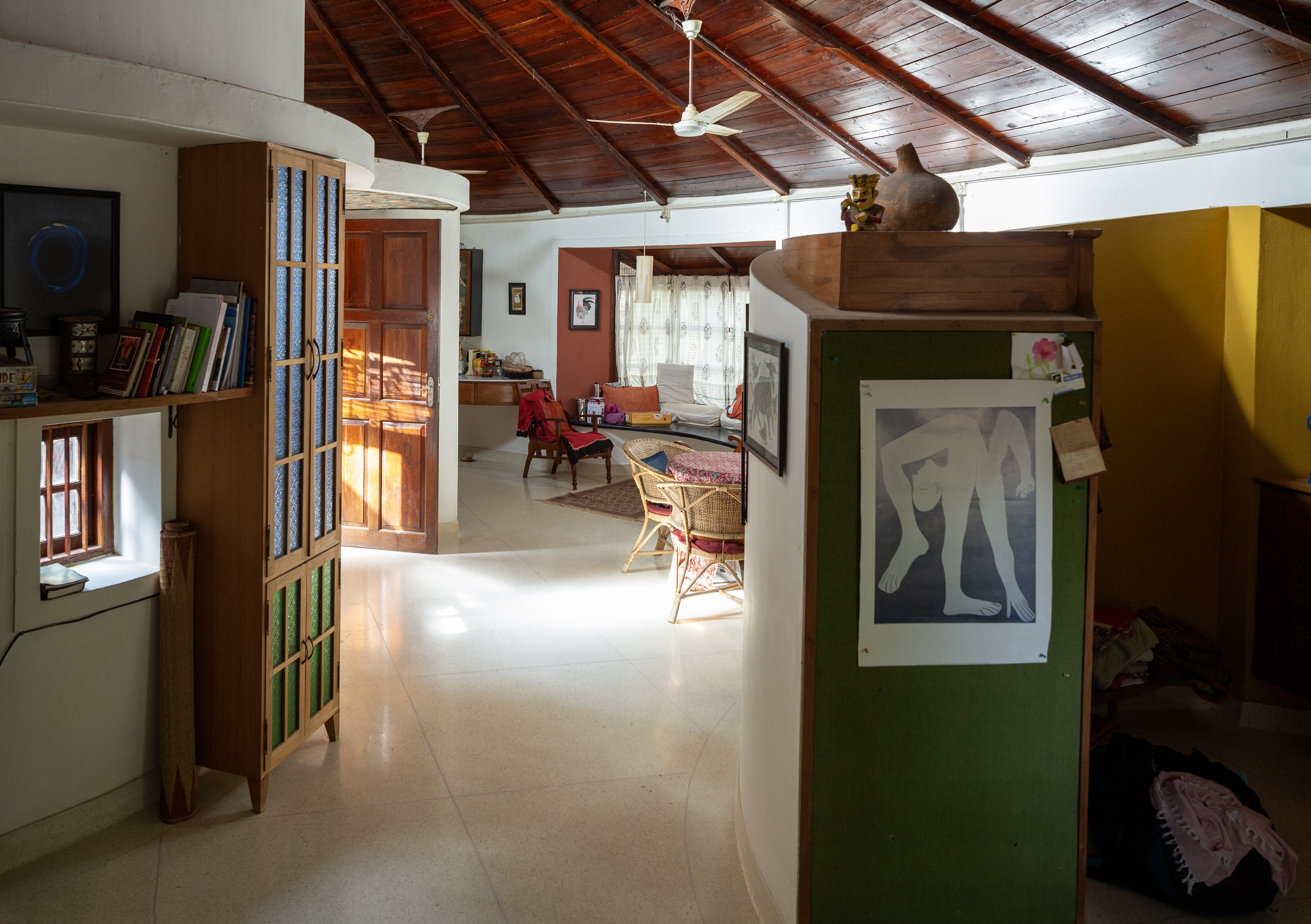 Inside a creative couple's magical, circular Indian home, 'like a fruit'
Inside a creative couple's magical, circular Indian home, 'like a fruit'We paid a visit to architect Sandeep Virmani and social activist Sushma Iyengar at their circular home in Bhuj, India; architect, writer and photographer Nipun Prabhakar tells the story
-
 The Architecture Edit: Wallpaper’s houses of the month
The Architecture Edit: Wallpaper’s houses of the monthFrom wineries-turned-music studios to fire-resistant holiday homes, these are the properties that have most impressed the Wallpaper* editors this month
-
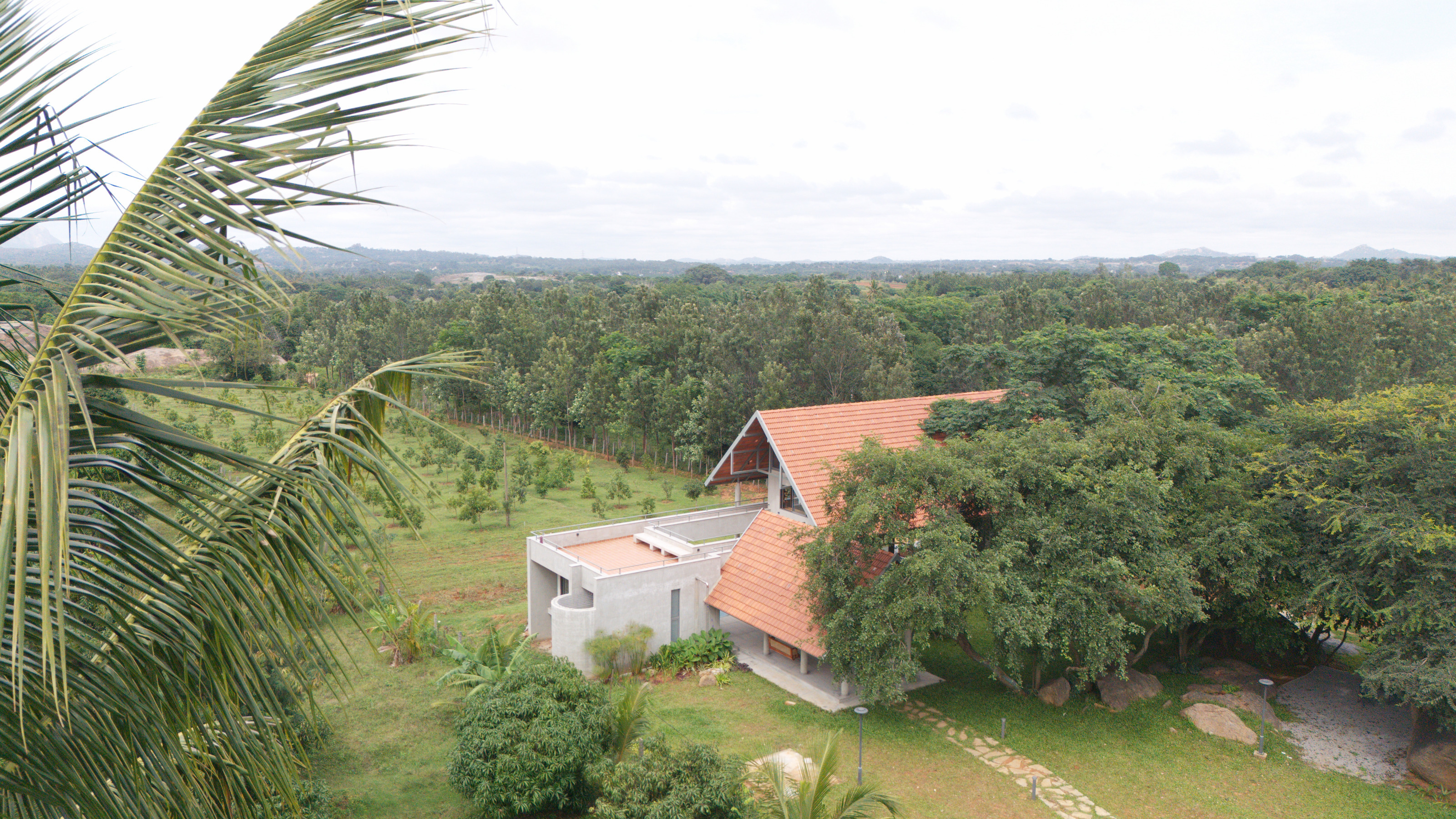 A refined Indian country residence reimagines the farmhouse
A refined Indian country residence reimagines the farmhouseSet among Karnataka’s rolling fields and forest, House by the Grove by Taliesyn Design & Architecture combines modern materials with an open approach to the elements
-
 Half bridge, half home: Wallmakers’ latest project takes architecture to daring new heights
Half bridge, half home: Wallmakers’ latest project takes architecture to daring new heightsHovering above a forest stream in Maharashtra, Bridge House pushes the limits of engineering and eco-conscious design
-
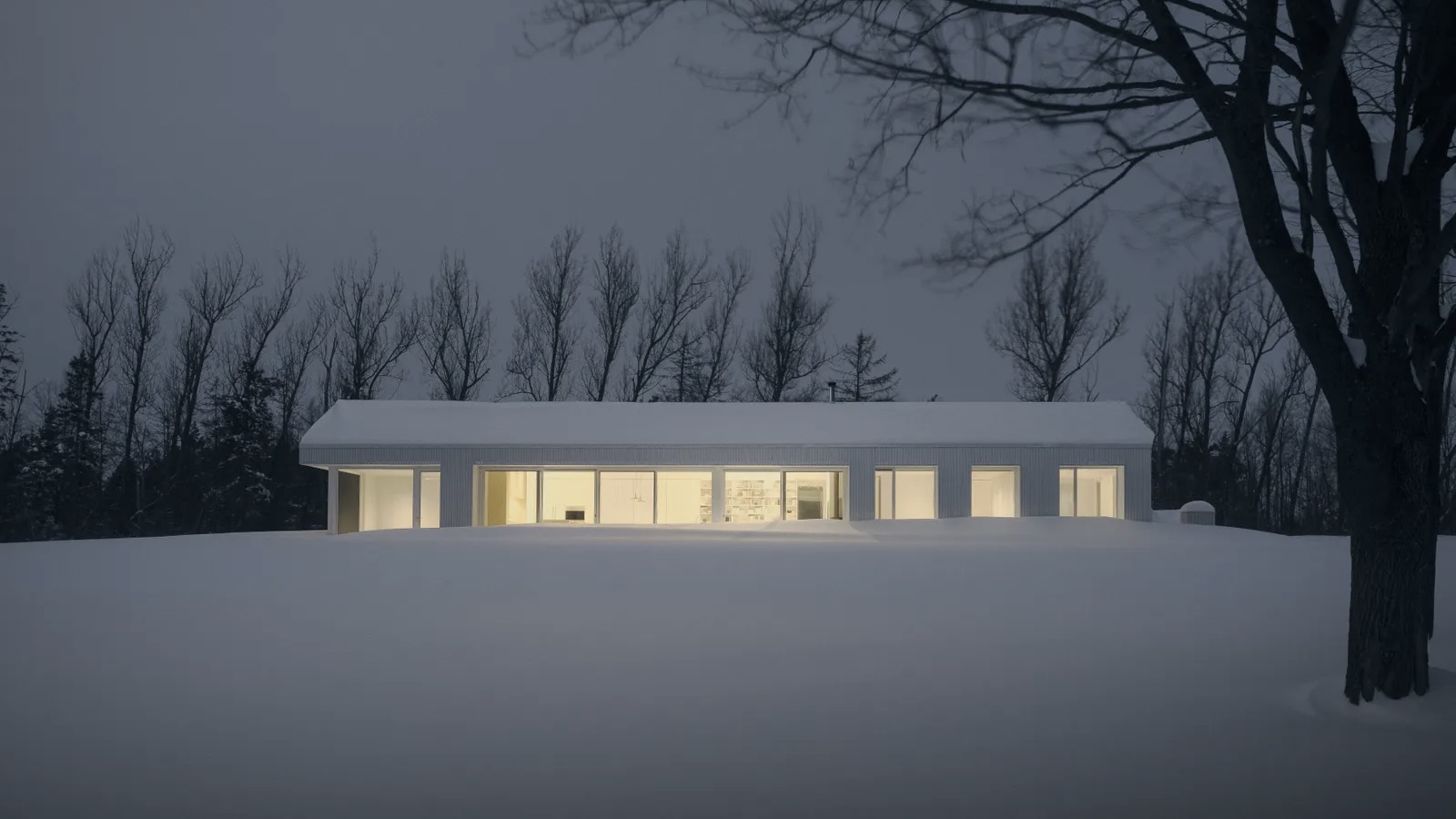 The Architecture Edit: Wallpaper’s houses of the month
The Architecture Edit: Wallpaper’s houses of the monthFrom Malibu beach pads to cosy cabins blanketed in snow, Wallpaper* has featured some incredible homes this month. We profile our favourites below
-
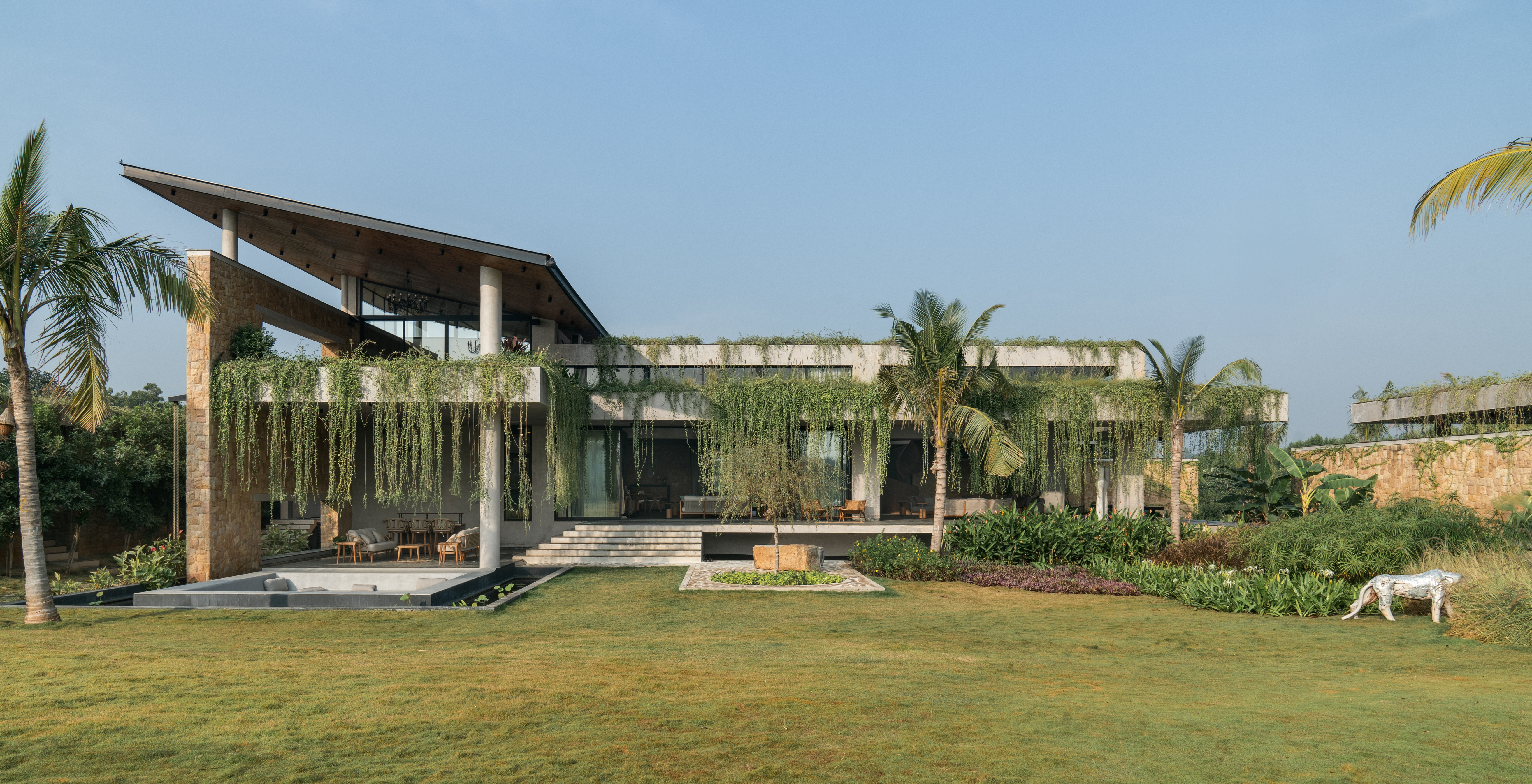 Cascading greenery softens the brutalist façade of this Hyderabad home
Cascading greenery softens the brutalist façade of this Hyderabad homeThe monolithic shell of this home evokes a familiar brutalist narrative, but designer 23 Degrees Design Shift softens the aesthetic by shrouding Antriya in lush planting
-
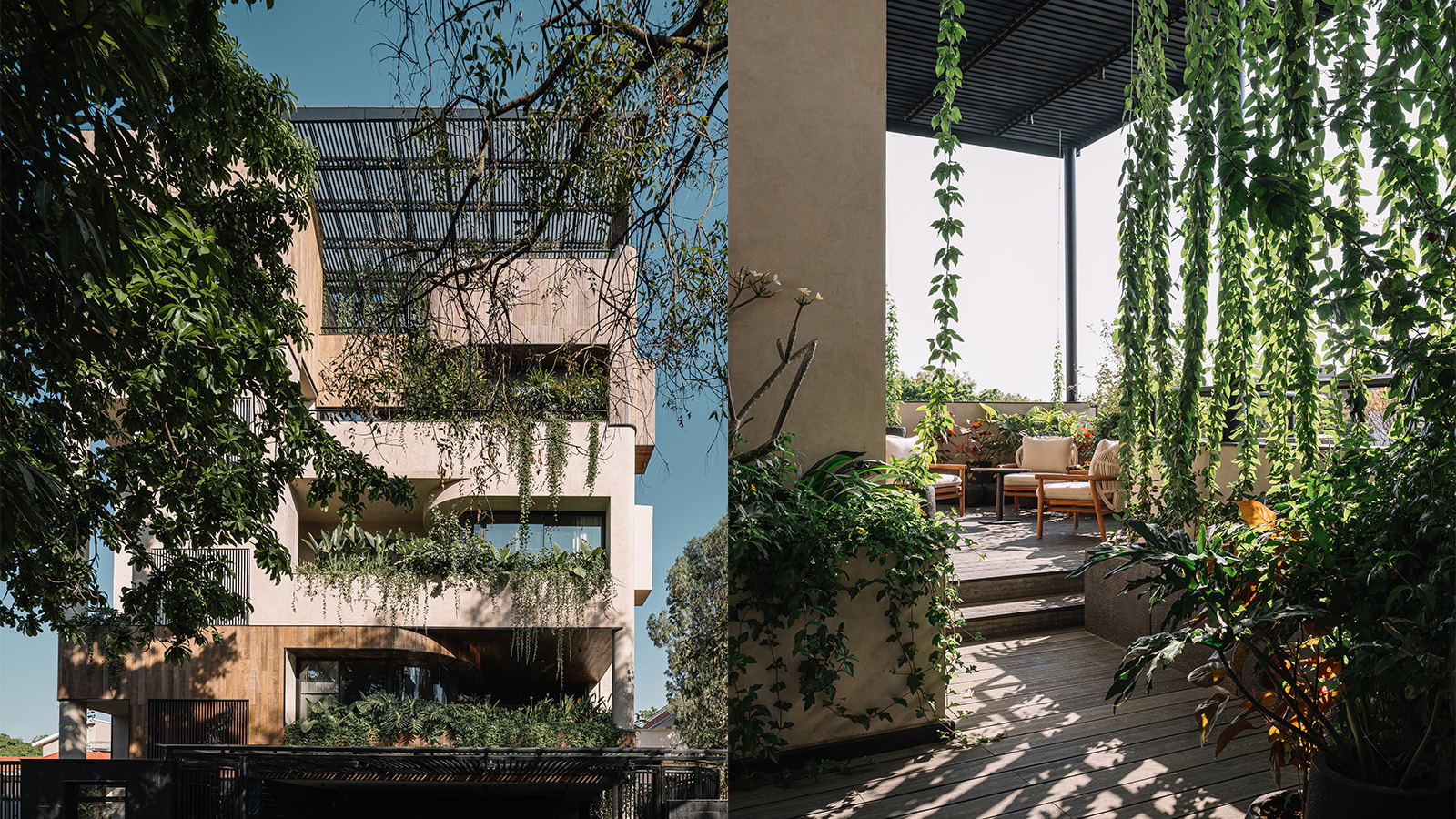 A lush Bengaluru villa is a home that acts as a vessel for nature
A lush Bengaluru villa is a home that acts as a vessel for natureWith this new Bengaluru villa, Purple Ink Studio wanted gardens tucked into the fabric of the home within this urban residence in India's 'Garden City'